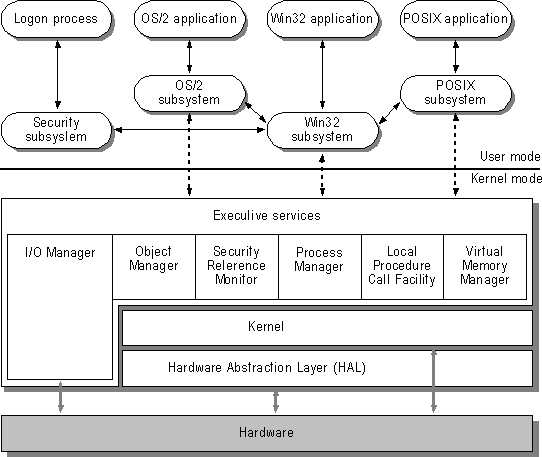Windows NT Architectural Modules
As Figure 1.1 shows, Windows NT is a modular (rather than monolithic) operating system composed of several relatively simple modules. From the lowest level to the top of the architecture, the Windows NT modules are the: Hardware Abstraction Layer, the Kernel, the Executive, the protected subsystems (included as part of the security model), and the environment subsystems.

Figure 1.1 Windows NT Modular Architecture
The modular architecture of Windows NT is briefly described in the following paragraphs. The remainder of this chapter describes in detail these architectural components, beginning with the Hardware Abstraction Layer (HAL), the layer seated between the computer's hardware and the rest of the operating system.
- The Hardware Abstraction Layer virtualizes hardware interfaces, making the hardware dependencies transparent to the rest of the operating system. This allows Windows NT to be portable from one hardware platform to another.
- The Kernel is at the core of this layered architecture and manages the most basic operations of Windows NT. This component is designed to be small and efficient. The Kernel is responsible for thread dispatching, multiprocessor synchronization and hardware exception handling.
- The Executive is a collection of kernel-mode modules that provide basic operating system services to the environment subsystems. It includes several components; each manages a particular set of system services. One component, the Security Reference Monitor, works together with the protected subsystems to provide a pervasive security model for the system.
- Environment subsystems are user-mode protected servers that run and support applications native to different operating systems environments. Examples of these subsystems are the Win32® subsystem and the OS/2 subsystem.

